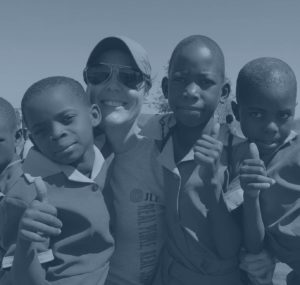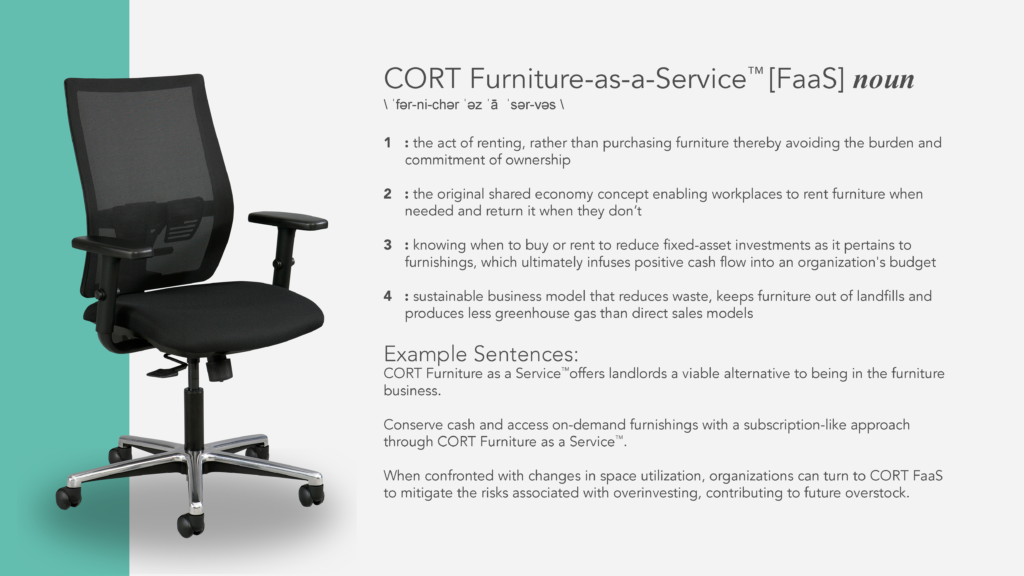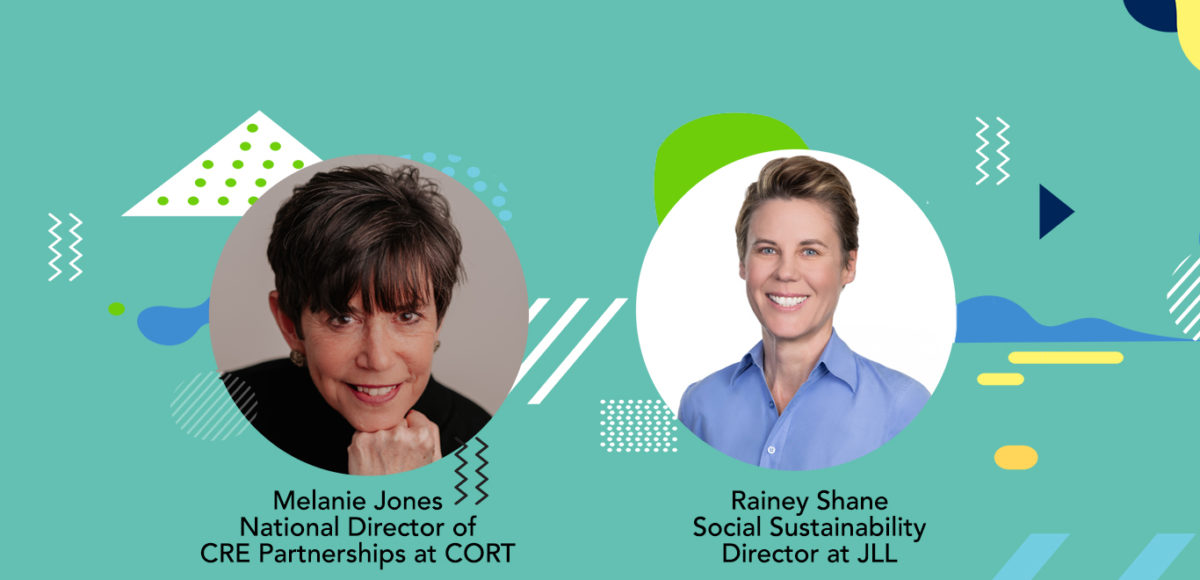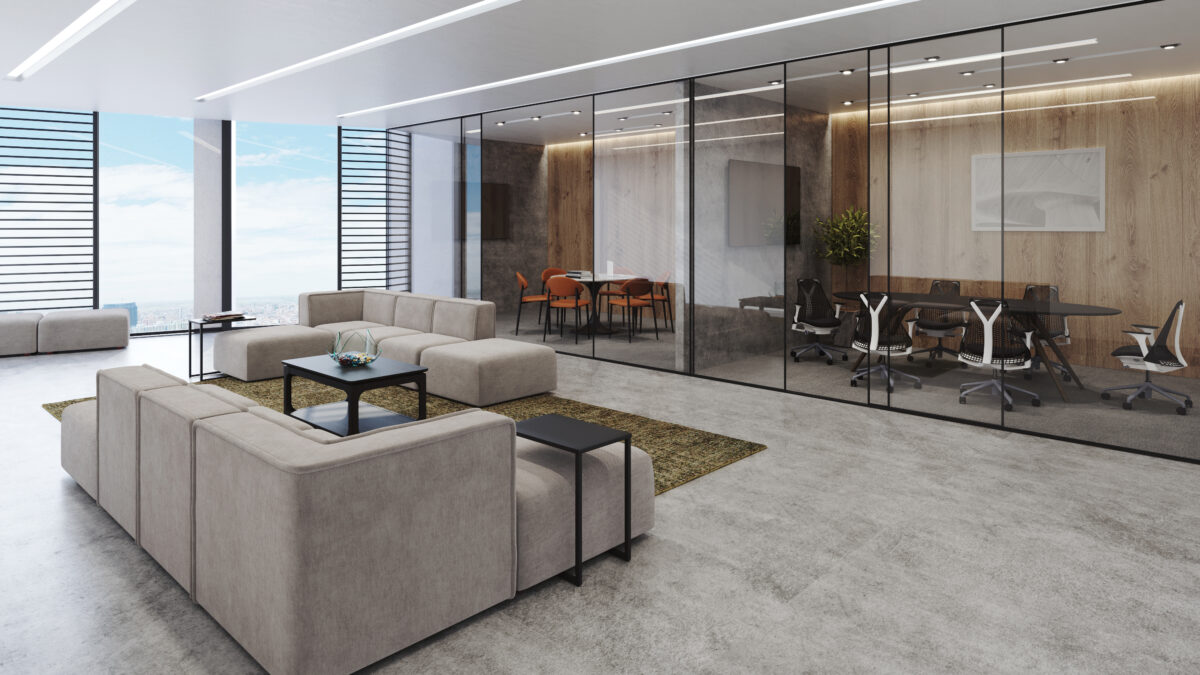This article is part of the “CORT Workplace Talk” series where Melanie Jones, CORT’s National Director, CRE Partnerships, sits down with thought leaders in commercial real estate to discuss advancements, insights, and trends within the industry. Sit back and learn more about CRE and how CORT Furniture Rental can benefit your organization.
It seems so fitting that on International Women’s Day, I had the opportunity to speak with Rainey Shane of JLL. In my opinion, Rainey is a true crusader in so many ways and truly an inspiration. Since I wasn’t as familiar as I wanted to be in understanding how commercial real estate is responding to social sustainability, the S in ESG, I turned to Rainey to learn a bit more. This short piece represents the tip of the iceberg on the subject, and I hope you’ll take the time to learn more and spread the word.
Melanie Jones: Rainey, I’ve known you for a while. You amaze me. You are a giver, a leader, and a team builder. You’ve founded organizations like Six Delta and Personal Defense Boot Camp — you are an Advisor for Liberators Alliance, a Second Lieutenant in the Civil Air Patrol, and others.
At your core, it seems you are not only concerned with but active in supporting human rights, an activist for the less fortunate, and consistent in articulating the importance of public & personal security—especially with kids. When did you develop a sense of speaking up and giving back, and what drives you now?

Rainey Shane: From an early age, as far back as I can remember, I’ve been motivated to protect things that can’t defend themselves. And as I’ve gotten older, moved through the world, and been exposed to various situations, whether with animals, children, the elderly, buildings, or the environment, I am driven to help make a difference. Moving into social sustainability seems to be the culmination of my professional and non-profit-oriented personal life missions.
Jones: When we live and express ourselves authentically, it’s amazing how often our personal and professional missions align!
You have a new title. Social Sustainability Director. Will you share some background on that?
Shane: Let’s start with how often commercial real estate gets a bit of a bad rap when it comes to social sustainability. It’s not that people don’t want to do good things, but, for the most part, they are following models that have been the norm for fifty years. They are trying to do things differently but often don’t have a roadmap.
We’ve assembled a team and we’re growing! The mission is to conduct research, and pull together practical information applicable to driving change for social sustainability in commercial real estate. Our goal is to spell out how to change, what that looks like and what steps to take, and how to measure and report progress.
Jones: The new seam certification™ was designed to provide exactly that, right? And how does seam align to ESG?
Shane: Yes. When Alex Demestihas and I decided to launch the seam certification, we created it as a nonprofit entity that sits outside of JLL. We’d been working on this for at least a year and a half before ever hearing the term ESG.
A huge investor client came to us asking how they could boost their ESG score with a real estate project that was in the works. As we evaluated the situation, we could see the client had the governance in order, and the environmental portion could be solved with LEED and WELL certifications, but the question was how to address the social part, the “S”?
That was a rewarding day! We’d already invested so much into developing the seam certification™ for situations precisely like this one.
It is incredible how our certification is coming together when the world is demanding that companies look at their social impact. Granted, ESG is for public companies with investors and shareholders. Still, many owners and developers know they must start looking at the social side of their real estate to secure better tenants, attract new talent, and signal to the market they are responsible stewards.
The seam certification™ addresses the S by focusing on the stakeholders not covered in environmental certifications like LEED and health and wellness certifications like WELL. LEED looks at the planet as a stakeholder; WELL looks at the people working inside the building. seam looks at the people who are going to work on the project or produce the materials used in the project; vendors, consultants, sub-contractors; the community around the project; and measures progress on objectives such as diversity, equity and inclusion, fair labor, decent work conditions, and human rights. It is intended to evaluate the social impact on the full range of stakeholders along the value supply chain of a commercial real estate project.
For example, there are stakeholders making the materials and products to build the building, and these materials are typically far from the building site, overseas perhaps, and we want to make sure the proper human rights due diligence is assessed, which contributes to eliminating modern slavery in the construction industry.
Shane: Eventually, yes. We are working on pilot projects now and only accepting specific pilots that will help us calibrate our scorecard as we seek our 3rd party verification partner. We will soon be launching a global marketing announcement about what we’re doing and we are already seeing tremendous interest in pilot programs in the Americas, Asia Pacific, and EMEA. At the same time, we have interest from professionals who want to go through the accreditation process to be seam APs.
Jones: I find the team members at JLL to be very entrepreneurial, and JLL as an organization is so supportive and embraces ideas from leaders on the team.
Shane: True. I’ve been in startups or entrepreneurial ventures my entire life, and I was hesitant to join a corporation as large as this, but JLL has been true to its word that they would support new ideas. Within my first year, I was able to launch the Adaptive Reuse practice, and now Social Sustainability consulting, both with the support of Brian Terrell, the Managing Director of the Southeast Central region.
At the end of the day, it’s not going to be the government telling us how to make “change,” it’s the market and people. Private industry is going to be the ones to save the world.
Jones: You’ve established seam as a nonprofit entity; why is that?
Shane: Alex and I created seam to find deep purpose in our work in commercial real estate and not create a for-profit venture. When we looked at business models in the social enterprise space, we felt that the nonprofit model was the right choice as its focus is on satisfying the beneficiaries, not shareholders.
We started with the question “how can we make a more significant impact in making the world a better place?” As you know, I’m involved in rescuing kids from modern slavery and trafficking and had the opportunity to rescue 25 children in Nepal last year. The accomplishment made me feel great about myself because I could see the impact on their faces, and then returned home and have to face the fact that there are 160 million others in forced labor situations who need help and support.
When I reflected on my ability to create more impact, I realized that my position in commercial real estate provides a much bigger opportunity to impact modern slavery because as seam scales, each certification will help shut down the demand for manufacturing and materials that enslave these children. When we only purchase from manufacturers that verify the protection of human rights, that 160 million number will go down. That’s my driver. That’s how I can make a difference. Monies from the nonprofit will go back into servicing the programs we’re developing. As our slogan says, we intend to “Make real estate a force for good.”
Jones: So, what’s new for you in leading social sustainability at JLL?
Shane: As you mentioned, I have a new title. The critical element in this role is my ability to speak about the seam certification™ and social impact consulting in my day-to-day work. This is the only real estate certification globally that looks at social impact.
Think of it this way: JLL is one of the world’s top three commercial real estate firms. The more projects we can push towards the LEED, WELL, and seam certifications, the more we directly impact a more equitable and sustainable world. This certification is agnostic, so we hope CBRE, Cushman & Wakefield, Colliers, Avison Young, and others will adopt the standard and fuel its growth.
Jones: Obviously, this would impact landlords and developers, but does it touch occupiers and tenants?
Shane: Good question. There are two types of certifications. One is for buildings and interiors. The other supports operations and maintenance. There are many details, and our website will continue to share information on both.
Jones: I have a friend that’s a workplace who is now charged with sustainability oversight. He was talking about how his company and many others are getting a lot of pressure from the shareholders to produce measurable responses beyond energy savings. We’ll probably see this conversation escalate in the next 20 years, don’t you think?
Shane: Absolutely. Impact investing has skyrocketed in the last two years. It’s somewhere around 27 trillion—I don’t remember the exact number but trillions. Our scorecard maps to GIIN which is the Global Impact Investing Network, and this is a framework that impact investment fund managers follow when they want to place money in social impact funds. There’s a trend for many to only look at socially sustainable investments. I do that in my personal investing now as it has become so easy and commonplace to have those choices.
Jones: For anyone not familiar with impact investing, it really refers to investing in the ESG eco-system. A place to invest money where the outcomes “do no harm” but also have a net positive impact on society and around the globe.
Shane: Our scorecard should make that easy for CRE. We are trying to make the scorecard easy to follow as well as being rigorous and robust so companies going through the certification can report on what they are doing around sustainability, ESG and have investment-grade reporting.
Jones: Not too long ago, I spoke with Alex Edds, Director of Innovation for JLL at the time. We created this piece, and in it, he says, “Sustainability is an outcome. It’s an outcome we’re all seeking and trying to deliver. At JLL, we strive to deliver better buildings, better cities, better quality, and better experiences. So I’ve been fortunate to stay pretty much aligned to my moral compass, my vision, you could say, of delivering outcomes.” You two are similar in passion, drive, and even the global message.
Rainey, I ask virtually everyone in this field: Do you see the CORT Furniture-as-a-Service™ offering as supporting circularity and sustainability in buildings, the workplace, and CRE in general?

Shane: It’s interesting. If I were you, I’d be approaching anyone with a sustainability title inside commercial real estate and workplace strategists. These people do care! Anyone leading clients through LEED, WELL, Fitwel, and BREEAM would be very interested in learning about what you are doing with the Furniture-as-a-Service model.
They make recommendations to owners, occupiers, clients, developers, or whomever. Circularity is a hot topic and trend, and our job is to bring problem-solving solutions to the table. We are responsible for helping clients save money, leverage best-in-class solutions, and meet various objectives from project to project and client to client. Obviously, your model offers a positive step forward for many.
Jones: No doubt, we are on a critical journey in changing habits and upgrading the norms related to sustainability; in all its forms. I know our team at CORT is upgrading our sustainability information, conducting ongoing research, and sharing ideas to help. One example of that is our sustainability guide. We operate by the process of Use. Fix. Reuse. Repeat. Buy.
Jones: What is your favorite part of this mission? What keeps you up at night?
Shane: What keeps me up is questioning my work. Are my scorecard and the certification the best they can be to create impact? Does the quality of the scorecard accomplish that? Secondly, am I able to recruit enough people and projects in a community to make a difference? Ultimately, we want to improve people’s lives because of the certification process.
My dream is one day, I’ll be able to invest time into Six Delta and travel the world, saving kids. One of the keys to my happiness is to continue learning and staying curious. And I never give up, ever. Persistence is my superpower. That’s success to me!






